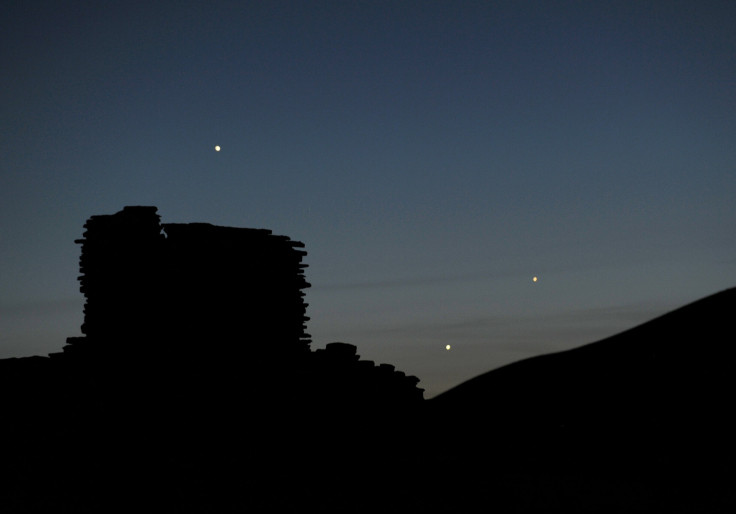Rare Planetary Alignment: Last And Best Chance To See Mercury, Venus, Mars, Saturn And Jupiter

If waking up early to see five planets in the sky has not been a priority, February is the last chance for skygazers to view the rare planetary alignment. Mercury, Venus, Mars, Saturn and Jupiter are visible until Feb. 20, but the first week will provide the best opportunity to observe the cosmic show.
The last time the five visible planets of our solar system were viewable in the pre-dawn sky was between December 2004 and January 2005. The rare assembly of planets became visible in the sky again on Jan. 20. At that time, Mercury was still relatively low on the horizon, thus making the alignment a bit difficult to observe for people living in cities or those who have an obstructed view of the horizon.
Mercury climbed higher in the sky throughout January and into February.
Looking at the horizon, Mercury will be the first visible planet. Above and to the right of Mercury is Venus, followed by Saturn. For a reference point, skygazers should find Venus, the brightest planet in the sky, to help locate the nearby planets. Mars is further up in the sky near the bright star Spica, according to EarthSky. Jupiter, the second-brightest planet in the sky, is located further to the right.
The waning moon will also serve as a guide for the planetary alignment. On Thursday, the moon will be near Saturn. By the weekend, there will be a Mercury-moon conjunction. It's recommended to begin looking at least 45 minutes before sunrise with the planets visible on the eastern horizon. For the best viewing of the planetary alignment, Sky and Telescope recommends would-be observers find a place with a clear view to the south or southeast.
By the middle of February, Mercury will begin its exit from the pre-dawn sky. After being an early riser, the closest planet to the sun will be visible in the evening sky beginning March 23.
© Copyright IBTimes 2024. All rights reserved.












